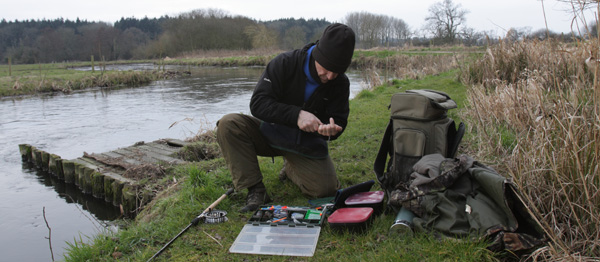Welchy is one of those annoyingly organised anglers, you know the sort; everything neat, labelled, put back in exactly the same place it was taken from, ‘stock control’ after every session so nothing ever runs out and a separate rucksack, holdall and tackle box for everything he fishes for: clinical, precise and, dare one say, obsessive!
As such getting him to ‘open up’ as part of this series was either going to be a very long feature, or, we would ask him to approach it one box at a time and talk us through his ‘must have’ kit relevant to what he was fishing for.
So, just what is Welchy fishing for?
“At the moment I’m not really fishing for anything!” he said, and went on to explain:
“At this time of year I love my small river fishing for roach, dace, grayling, perhaps the odd chub, but we have just not had a winter this year and I’m finding it difficult to acclimatise but my small river kit is ready to go just in case – although it may well be next winter before I have to use it again! As far as essentials are concerned there are quite a few bits I’d struggle to fish as well as I should do if I didn’t have them with me.”
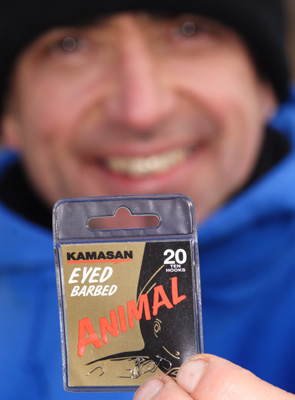 Kamasan Animal Hooks
Kamasan Animal Hooks
Subtle enough to successfully fish a single maggot on a 20 for roach and dace but man enough to cope when the same bait is picked up by a big chub, carp or barbel these are the ultimate small hook for the big fish angler.
Incredibly strong in relation to the gauge of the wire with a straight eye, slightly elongated shank, round bend and curved beak point they are suited to a wide variety of baits from maggot, casters, bread and corn to pellets and boilies and to both hair and on-the-hook presentation.
A barbed (I never use barbless hooks) 18 is my starter for roach, chub and grayling and I scale up or down depending on how the fishing is going on the day. If I’m in a known dace swim I’ll switch to a finer wire pattern but generally I’ll stick with the Animals. Size 20’s have caught me barbel to 12lb when maggot fishing for chub and carp to over 30lb when roach fishing and there are few hooks which will do that as well as they will present a single maggot for big roach or grayling.
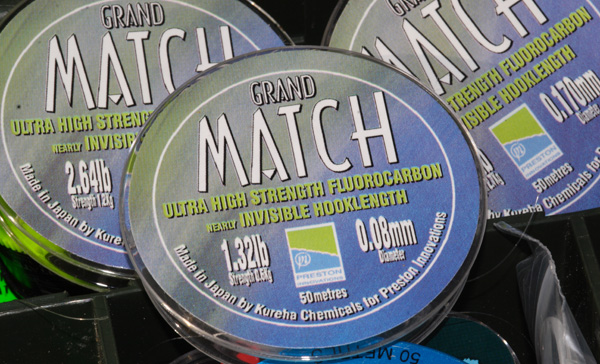
Grand Match Fluorocarbon
I’m a massive fan of fluorocarbon, even more so in the winter on the small, gin clear chalkstreams I fish and I believe not using it is a real handicap at times.
There is a lot of good fluorocarbon about in the higher breaking strains these days but, and I test regularly and rigorously, there are not so many reliable brands when it comes to the lower breaking strains.
I’ve been using Grand Match for some 10 years or so now and, like all fluorocarbon, you have to treat it with care but it has never let me down and it offers an unparalleled diameter to breaking strain to abrasion resistance ratio. I tend to go for 1.32lb (0.08mm) for roach and grayling but will step up to 2lb (0.096mm) or 2.64lb (0.112mm) if conditions dictate or indeed drop to 0.66lb (0.06mm) if I’m dace fishing.
The bad news is that Grand Match was discontinued and to get it now you have to go via eBay or stores holding old stocks of it. Thankfully I’ve got a few trade packs left which I’m storing very carefully there is nothing I’ve seen to come remotely near it.
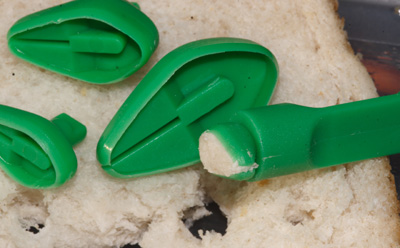 Drennan Flake Punch
Drennan Flake Punch
Yes it’s easy enough to put a tiny piece of flake on without one but this little tool is a real gem as far as I’m concerned as it gives beautifully compressed, oval sections of flake which are just perfect for small hooks.
The discs produced fluff up just the right amount without masking the hook and with a choice of head sizes it’s easy to match bait to hook size as well. I carry a set of bread punches in my box as well but it’s the flake punch I’d be lost without for roach and dace fishing.
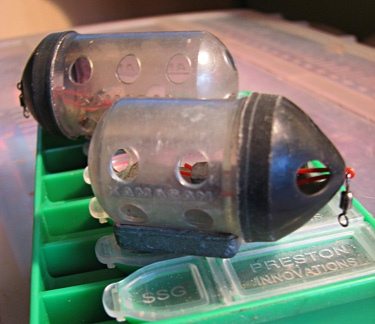 Blackcap Feeders
Blackcap Feeders
Oft copied but I’ve yet to find a better maggot feeder and I carry a variety of body sizes and weightings along with a few dead cow leads for holding them in a big push.
They hold well, are quick and simple to load, cast nicely and do exactly what they are supposed to. I carry a bit of tape in case I need to slow the feed rate down, a knife in case I need to open the holes into slots, cork cylinders for on the top of the feeder chub rigs and a marker pen or two to colour up the bodies – although the latter is a confidence thing rather than an essential. I used to glue dried sand and gravel to the caps too – but I’m past that stage now!
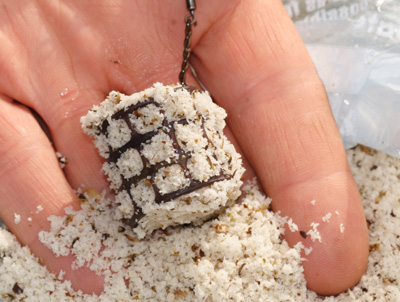 Drennan Cage Feeders
Drennan Cage Feeders
As with the blackcaps oft copied but nobody else comes anywhere near. The camo finish is neat, the sizes, especially the micro ones, are perfect and they grip contents brilliantly.
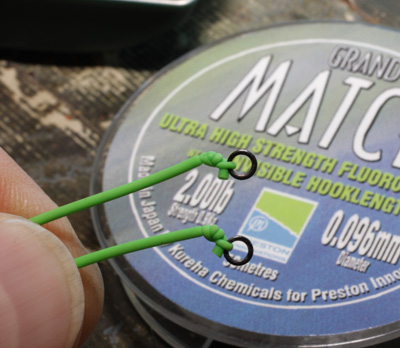 Pole Elastic
Pole Elastic
I bring a pole with me to barbel fish (albeit to place hookbaits, rather than fish) but no, I don’t bring a pole to the chalkstreams with me!
I do, however, bring pole elastic and in my book it’s the single most important bit of kit for ensuring almost every grayling you hook ends up in the net. I use it in conjunction with a couple of micro rings to tie up a short bungee rig which acts as a perfect shock absorber to counter the peculiarly gyrating and twisting fight of grayling.
Since I started using it lost grayling are very rare indeed and I would guess it’s probably upped my hooked to caught ratio by at least twenty fold – and that’s a lot of grayling. As a rough guide a number 6 or 7 is about right but experiment.
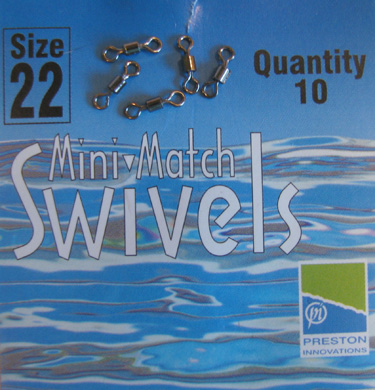 Micro Swivels
Micro Swivels
I think these ‘may’ have a role to play in grayling conversion rates too but I employ one, usually a size 22, on most of my trotting rigs simply to counter line twist on the retrieve which can be horrendous – especially if fishing double maggot, which has a tendency to spin like a propeller!
You need to take the weight of the swivel into account when working out your shotting but it’s not much of an issue.
